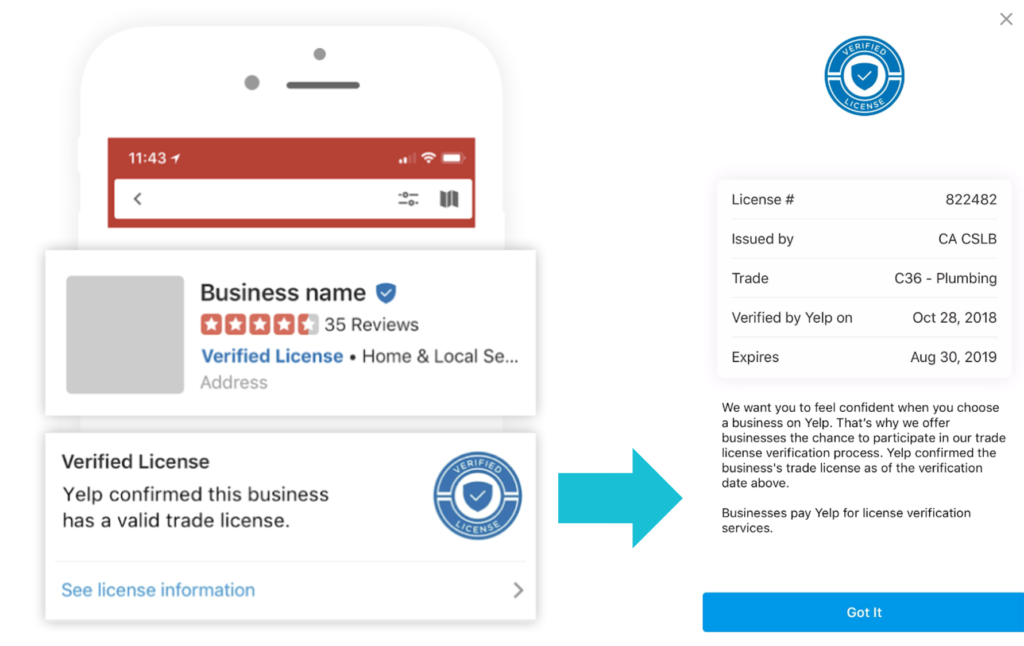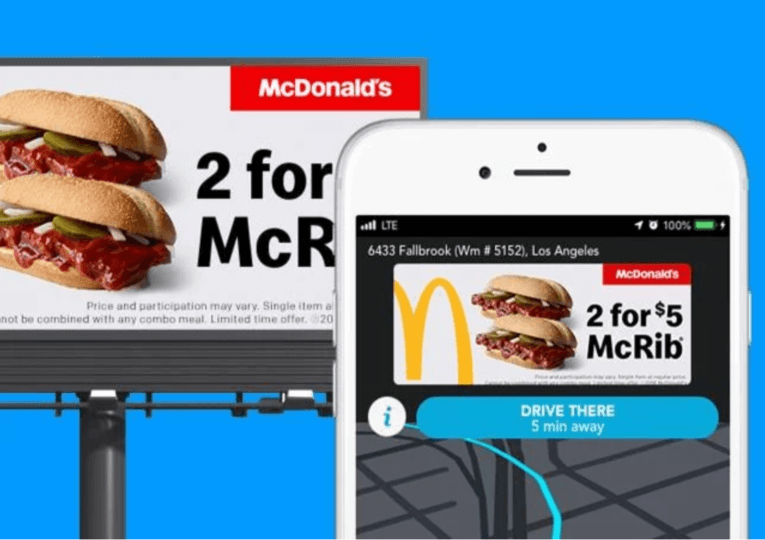[MARCH 2019] Local SEO Trends Featuring News from Yelp, Waze and Google
Local search moves fast. That’s why our team of experts is here to help local businesses and multi-location brands keep up with the latest search engine optimization (SEO) news and trends. Here’s a recap of a few of the biggest stories in local SEO from the past month.
Yelp rolls out Verified License badges
In March, Yelp started rolling out a new feature for its listings – the Yelp Verified License. Listings sporting the shield, which is indicated by a blue shield with a check mark, have been manually verified by Yelp as a legitimate and trustworthy business. Yelp is rolling out the shields for business pages of service providers across the home and local services category, including contractors, plumbers and movers, along with other high-trust businesses like childcare and estheticians.
By clicking on the shield users can see all relevant licensing information.

Yelp has claimed that including the YVL shield boosts listing engagement and visibility. According to Yelp:
In early experiments with contractors on Yelp, the Verified License badge helped both consumers and businesses. On average, having a Verified License badge on a business page increased consumer engagement, including clicks, calls, quote requests and other actions, by 24 percent.
Yelp Verified Licenses are currently only available in select states – Arizona, California, Florida, Georgia, New York, Texas and Washington – but the plan is to roll it out to other states in the future. Businesses in the qualifying states and categories can apply to Yelp to be included in the program. Yelp’s Verified License program costs $1 per day and businesses will need to submit an application to be considered.
Why this is big for local SEO
In an ecosystem where fake reviews are more common than not and 86 percent of users read reviews before deciding to trust a local business, adding another stamp of approval to your online reputation certainly won’t hurt.
Waze expands its navigational ad offerings
In 2017, Waze rolled out Waze Local – an advertising solution that allowed local businesses to target nearby drivers with meaningful ad experiences. Now, the Google-owned navigation app is ready to expand the offering by connecting traditional billboards with in-app ads. According to Search Engine Land:
Waze geofenced roughly 300 billboards in Southern California. Drivers along routes passing McDonald’s billboards were shown “zero-speed takeover” ad units, which only appear when the car is stopped. The ads included a “drive there” call-to-action, which then routed drivers to a nearby McDonald’s location. Ads could be shown at any point along the driver’s route but were not shown if drivers had gone out of range of McDonald’s locations.

Image source: Search Engine Land
Why this is big for local SEO
The campaign was a hit for McDonald’s, delivering more than six million impressions to Waze users and driving more than 8,000 visits to nearby locations. This new ad type is just another example of the many opportunities now available for local marketers looking to coordinate between traditional and digital media efforts.
Digital takeaways for brick-and-mortar grocery stores
Think with Google is known for sharing stats and trends that help local marketers understand how consumers interact with their business. In its latest research, Think with Google shared a wealth of insights and stats for traditional grocers looking to connect with a growing number of online grocery shoppers.
- Only 3 percent of U.S. grocery shopping occurs online, but e-commerce penetration is projected to triple over the next 10 years.
- More than 50 percent of offline grocery sales are influenced by digital, and 43 percent of consumer packaged goods (CPG) shoppers said they used search to become inspired, browse or conduct research in their most recent shopping journey.
- Among consumers who haven’t used an online grocery shopping service yet, 96 percent said they would look first to a traditional brick-and-mortar retailer for home delivery, and 85 percent say they would select a store they already visit.
- Consumers who haven’t used an online grocery shopping service yet pointed to the ability to build a digital shopping list and compare prices as top features they’d value most.
- Only 42 percent of people who’ve shopped online for groceries once in the past 12 months say that the experience saves them time versus shopping in a store.
Why this is big for local SEO
While grocery stores haven’t experienced the same levels of online disruption as other retail industries, it looks like change is on the horizon. If you work in local marketing for a grocery brand, now is the time to start shoring up your online strategy. Start identifying what online features are most important for your customers and find ways to deliver the shopping experiences they expect.
Are you interested in improving your multi-location brand’s local presence? Contact Mindstream Media Group to learn how we Fast-Forward business for our clients.
More from Mindstream Media Group

Meet the Mindstreamer – Chandler Swanner
Chandler Swanner’s interest in advertising dates back to her childhood. Her mother (and role model in life) was a Media […]

Third-Party Cookie Phase-Out: What Marketers Need to Know
Cookies are an essential part of internet usage, allowing websites to remember you and provide a more personalized experience. This […]

Meet the Mindstreamer – Kaya Bucarile
She plans and oversees media strategy for agency clients, working closely with project and platform managers to ensure that we […]
